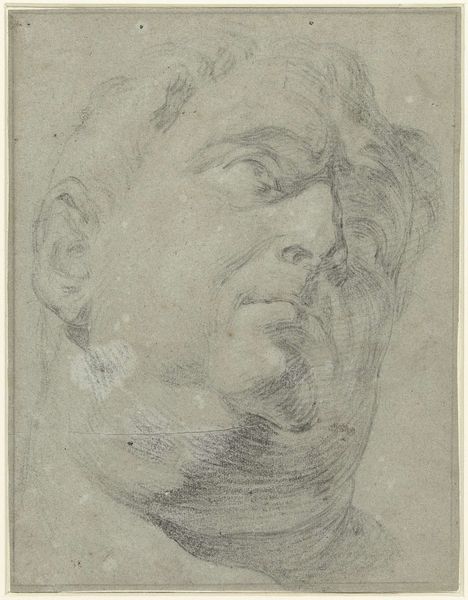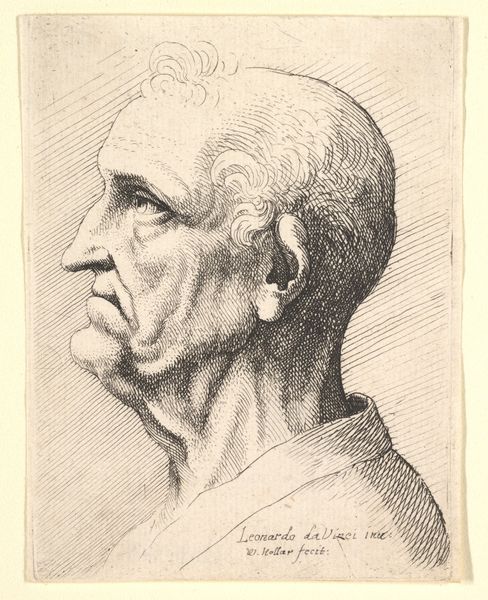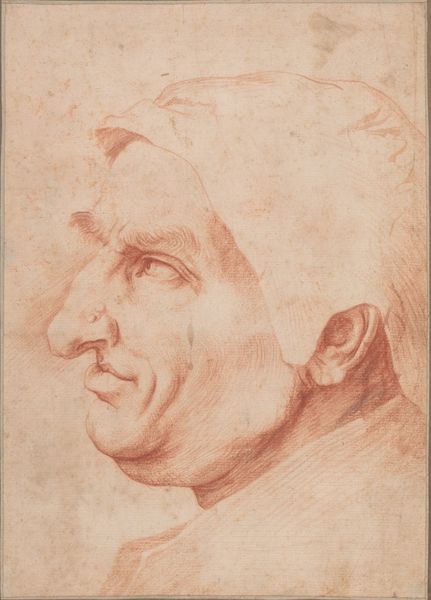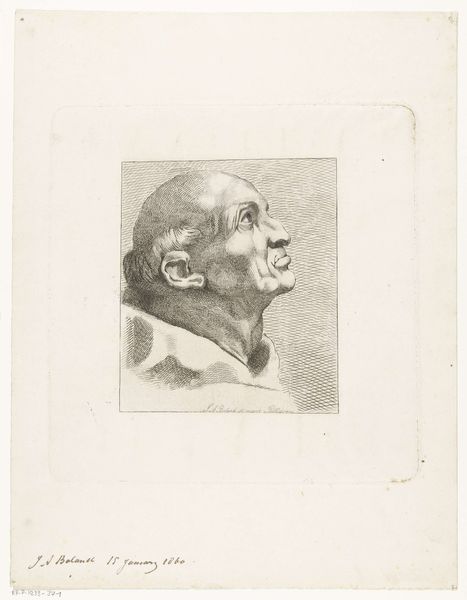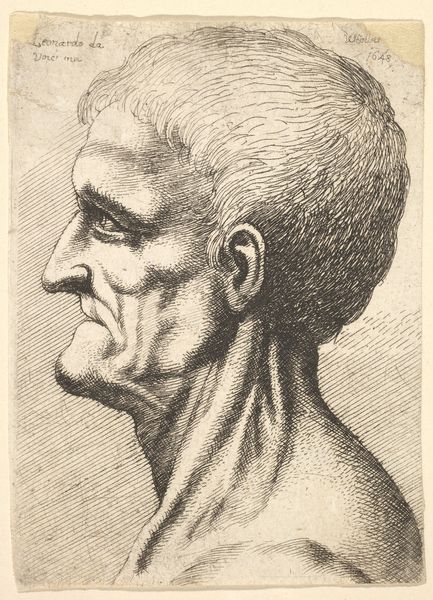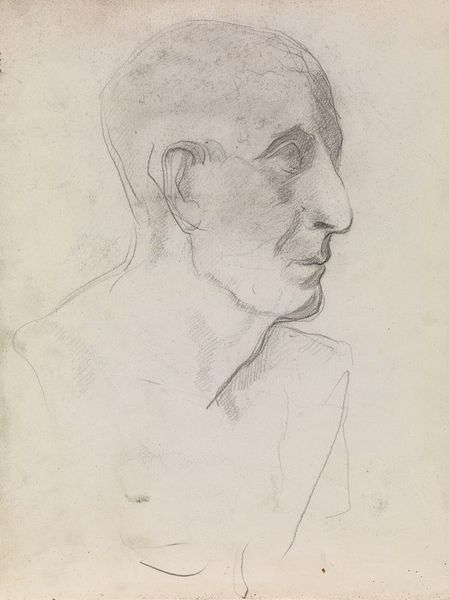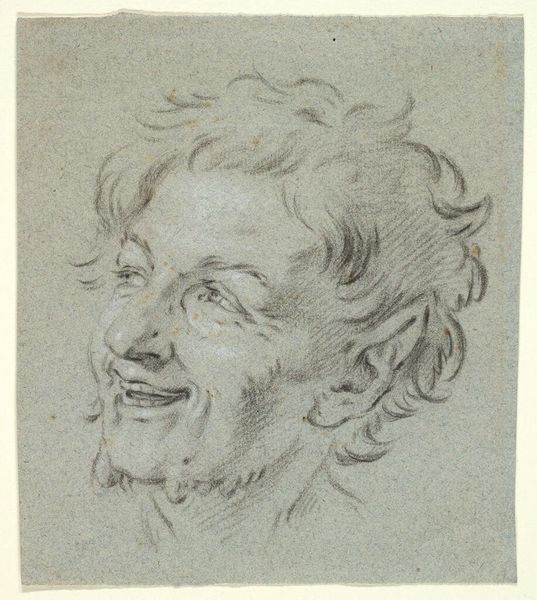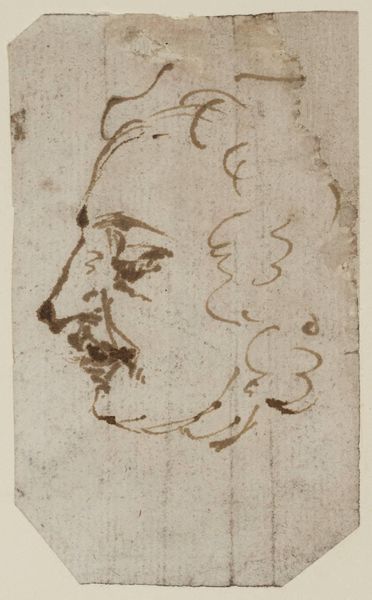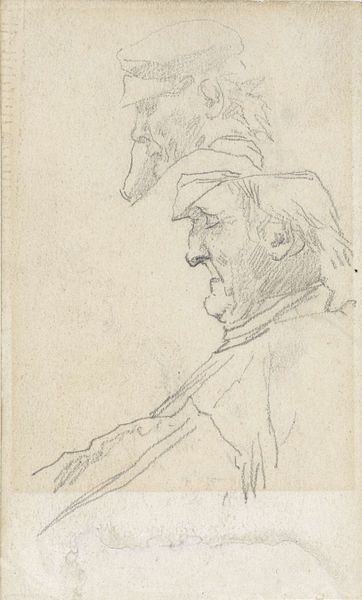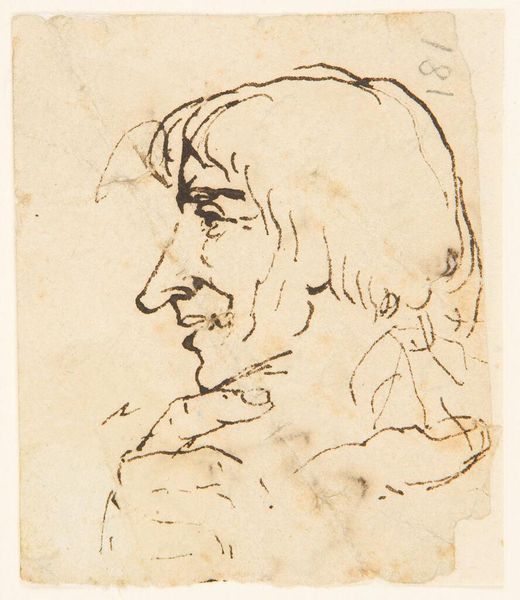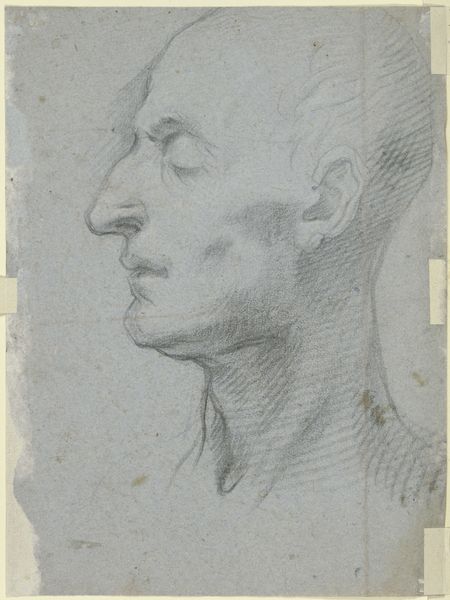
drawing, ink
#
portrait
#
pencil drawn
#
drawing
#
facial expression drawing
#
ink
#
pencil drawing
#
classicism
#
portrait drawing
#
history-painting
#
academic-art
Copyright: Public Domain: Artvee
Curator: This drawing, "Head of a Man," is attributed to Peter Paul Rubens, rendered in ink. The work captures a striking profile, marked by meticulous lines and shading. My immediate impression is the sheer power of its execution. The lines create a very graphic effect. Editor: Yes, and the drawing's impact resonates with Ruben's societal standing as one of the most successful Northern European artists of his era, enjoying international fame during his lifetime. Consider the power dynamics at play in rendering the male subject with such anatomical precision; does it glorify or critique? Curator: From a formalist viewpoint, the strong lines defining the contours immediately convey an attention to geometric proportions and balance. The modeling of light and shadow create depth and volume, resulting in a robust sense of physicality. Editor: And those lines, perhaps unconsciously, reflect the intersecting historical discourses about masculinity during this time period. It speaks to established social norms. How might this image have affirmed or challenged perceptions of masculinity within its original social context? Curator: I'm more fascinated by the pure aesthetics of its design, actually. There's something in the composition—the calculated interplay of light and dark, the way the forms recede and advance—that is masterful. Editor: For sure. The academic tradition clearly shines through, particularly when assessing historical portraits and their significance in the context of shifting gender norms, political power, and the expression of human form through the lens of the patriarchy. The title and artist information in the work's upper- and lower-margins further signal who held intellectual, and perhaps financial, capital. Curator: Whether political statement or artistic display, the power of line, shading, and volume create an image that is quite affecting. I find the focus on shape quite impressive and striking, personally. Editor: This work makes a compelling case to explore art’s vital role in reflecting and refracting cultural dynamics across the ages. It highlights critical dialogues about representation, agency, and power structures. Curator: And that interplay makes looking at this piece quite enjoyable, regardless of gendered history!
Comments
No comments
Be the first to comment and join the conversation on the ultimate creative platform.
